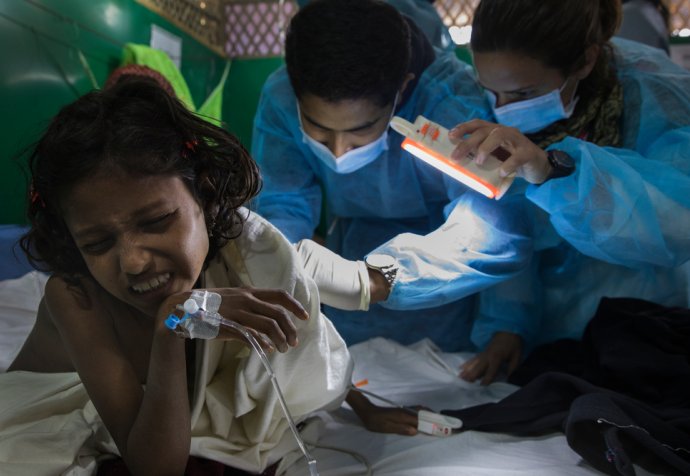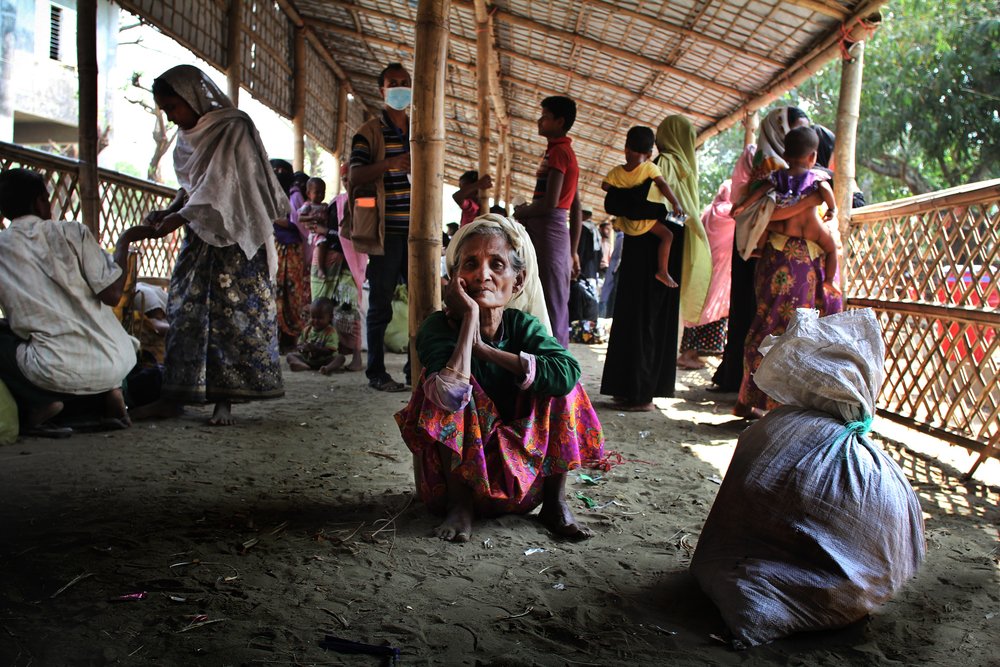“Most of the Rohingya are in a camp that has been there for more than 10 years. The camp has always been high density with houses made from bamboo poles, plastic sheeting and brush laying over the top of it, with just dirt pathways running between them.
The expansion as a result of the hundreds of thousands of people who have come in since August looks very much the same. The houses are still very simple structures, now with mud barricades to keep water from coming in.
The vast majority of people coming from Myanmar fled in September and October but we’re still seeing hundreds of people every single week coming over. In February almost 3,000 people arrived, still fleeing violence and difficulties in Myanmar.



